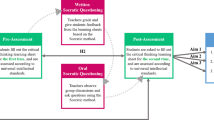Abstract
The purpose of this one group—pre test post test design classroom research was to examine learning achievement, critical thinking and satisfaction of first year nurse students at school of nursing during academic year 2011. In the research activity, 94 students participated in three weeks for each scenario in Local Wisdom and Health Care which composed of 4 scenarios. Problem based learning process were included the preparation of facilitators, preparation of learners, and problem/scenario based assignments. The instruments composed of 1) 135 items, 4 multiple choices test which were covered behavioral objectives and blue print of test and validated by course lecturers 2) opinion evaluation form, open ended questionnaire and 3) the critical thinking questionnaire, 80 items in five domains which are Inference, Recognition of Assumption, Deduction, Interpretation, and Evaluation of Argument with internal consistency of .73. Data were analyzed using frequency, percentage, mean, standard deviation, percentile, t test and \(\chi ^{2}\) test. It was found that the highest score of learning achievement was 88.79 % while the lowest score was 70.33 %, average learning achievement score was 80.60 \((\pm 3.47)\%\). The highest grade levels were B+ and B equally (41.49 %). Students demonstrated higher overall critical thinking \((49.62 \pm 5.78)\) after undergone problem based learning process than before the problem based learning process \((46.69 \pm 6.00)\) statistically significance \((\text{ t}\,=\,4.443, p\,<\,.05)\). Inference and Recognition of Assumption domain after PBL process were better than their own thoughts before PBL process significantly (t = 2.288, \(p\,<\,.05\); t = 6.287, \(p\,<\,.05\), respectively). The ability of critical thinking was found that the high, moderate and low level (percentile \(>75, 25-75\) and \(<25\)) after PBL were difference from the ability before the process significantly \((\chi ^{2}=12.219, p\,<\,.05)\).
Similar content being viewed by others
References
The office for National Education Standards and Quality Assessment. (2003). National Education Act year 1999 and additional version 2001. Bangkok: Prigwan Graphic.
The American Nurses Association. (2010). Nursing: Scope and standards of practice. Washington, DC: American Nurses Publishing.
Facione, N. C., Facione, P. A., & Giancarlo, C. A. (2000). The disposition toward critical thinking: Its character, measurement, and relationship to critical thinking skill. Retrieved September 19, 2011, Available: http://www.insightassessment.com
Carlislea, C., & Ibbotson, T. (2005). Introducing problem-based learning into research methods teaching: Student and facilitator evaluation. Nurse Education Today, 25, 527–541.
Mohamed Ali, W. G., & El Sebai, N. A. M. (2010). Effect of problem-based learning on nursing students’ approaches to learning and their self directed learning abilities. International Journal of Academic Research, 2(4), 188–195.
Kammanee, T. (2008). Science of teaching knowledge for effectiveness of teaching and learning process (8th ed.). Bangkok: Chulalongkorn Printing University, Bangkok, Thailand.
Chaiya, S. (1999). The effect of the portfolio on ability of critical thinking and readiness for self-study of nurse students in Ministry of Public Health. Bangkok, Thailand: Unpublished master’s thesis Chulalongkorn University.
Beers, G. W. (2005). The effect of teaching method on objective test scores: Problem-based learning versus lecture. Journal of Nursing Education, 44(7), 305–309.
Kampak, K. (1996). The relationship between focusing on the real situation and ability of critical thinking in nurse students. Unpublished master’s thesis Chulalongkorn.
Ratanakomol, P, Kerkchaiwan, D, Onnkam, O and Nunlaong, Y. (1999). Critical thinking of nurse students, Boromarajonani College of, Nursing, Chainat. (Unpublishing).
Kocaman, G., Dicle, A., & Ugar, A. (2009). A longitudinal analysis of the self-directed learning readiness level of nursing students enrolled in a problem-based curriculum. Journal of Nursing Education, 48(3), 286–290.
Department of Registration Mae Fah Luang University. Local Wisdom Subject. Retrieved March 17, 2011. From https://reg.mfu.ac.th/registrar/teach_browse.asp?
Oberski, I. M., Mathew-Smith, G., Gray, M., & Carter, D. E. (2004). Assessing problem-based learning with practic.e portfolios: One innovation too many? Innovations in Education and Teaching International, 41(2), 207–221.
Pongsetthasunt, N. (2000). A comparative study on critical thinking of the upper secondary school students in Khon Kean municipality. Khonkhan, Thailand: Unpublished master’s thesis Khonkhan University.
Author information
Authors and Affiliations
Corresponding author
Rights and permissions
About this article
Cite this article
Santiprasitkul, S., Sithivong, K. & Polnueangma, O. The First Year Nursing Students’ Achievement and Critical Thinking in Local Wisdom Course Using Problem Based Learning Process. Wireless Pers Commun 69, 1077–1085 (2013). https://doi.org/10.1007/s11277-013-1067-2
Published:
Issue Date:
DOI: https://doi.org/10.1007/s11277-013-1067-2




